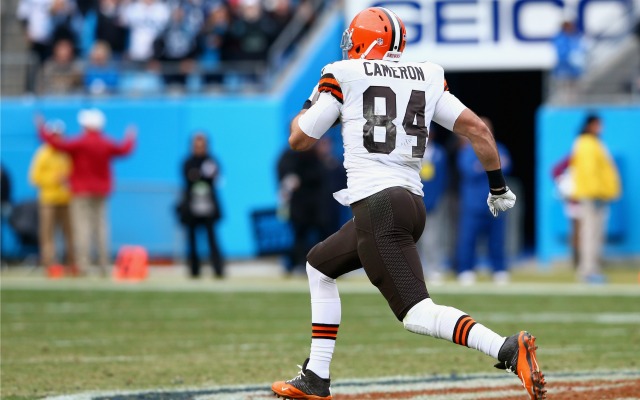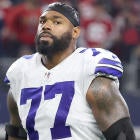
1. The money: Cameron's contract is for two years and pays him $15 million, of which only $5 million is guaranteed. The average annual value of $7.5 mllion makes him the fourth-highest paid tight end in the NFL, per Spotrac, while the guaranteed figure is only the 17th-largest at the position. The Dolphins do not have very much salary cap space left after signing Cameron and Ndamukong Suh, among others, but they cleared a bit more out by trading Dannell Ellerbe and a third-round pick to New Orleans for wide receiver Kenny Stills.
2. Cameron's production: Cameron spent his first four seasons with the Cleveland Browns, playing in 47 of a possible 64 games. He caught 130 passes for 1,600 yards and 10 touchdowns in those four campaigns. The majority of that production -- 80 catches for 817 yards and seven scores -- came in his breakout 2013 season. It should also be noted that Cameron is a pretty decent downfield target: he caught 10 of 20 passes thrown at least 20 yards down the field in the last two seasons, for 341 yards and two touchdowns.
His catch rate of 59.9 percent is fairly low for a tight end, but that can be at least somewhat excused considering his quarterbacks were Colt McCoy, Seneca Wallace, Brandon Weeden, Thaddeus Lewis, Jason Campbell, Brian Hoyer, Johnny Manziel and Connor Shaw.
3. The market: Cameron was the 36th-ranked player and second-highest ranked tight end (behind Julius Thomas) on our free agent big board. The Dolphins placed the transition tag on incumbent tight end Charles Clay, but the Bills are reportedly coming after him and are expected to make an offer soon. The top remaining options available after that is Jermaine Gresham (66). Lance Kendricks (81), Niles Paul (90) and Virgil Green (94) re-signed with the Rams, Redskins and Broncos, respectively.
4. How he fits: This question probably depends at least a bit on whether the Dolphins retain Clay. Miami wants to keep him and use the two together in a similar fashion to how the Patriots used Rob Gronkowski and Aaron Hernandez a few years ago. In a scenario like that, one imagines Cameron would play the Gronkowski role lining up in line or split out wide, while Clay would be the "move" tight end like Hernandez.
The Dolphins found themselves a reliable slot receiver in last year's draft in Jarvis Landry, who finished second among rookies with 84 catches last season. He excelled at working in short-to-intermediate zones and finished with the highest catch rate among 19 players who ran at least 50 routes out of the slot.
The acquisition of Stills provides an over-the-top deep threat and presumably will allow Miami to move on from the burdensome contract of Mike Wallace at some point. The Dolphins had been trying to trade Wallace earlier in the offseason and supposedly renewed attempts to do so again on Friday, but at his salary there might not be too many takers unless he agrees to restructure his deal.
Either way, in Cameron and Stills the Dolphins added two intriguing new targets for quarterback Ryan Tannehill, entering his second season in offensive coordinator Bill Lazor's offense. Lazor came to Miami from the Philadelphia Eagles, and he incorporated some elements from Chip Kelly's spread-em-out, quick-decision offense. After some early bumps, Tannehill improved throughout the season, and he should be able to build on that improvement with his newfound targets next year.
![[object Object] Logo](https://sportshub.cbsistatic.com/i/2020/04/22/e9ceb731-8b3f-4c60-98fe-090ab66a2997/screen-shot-2020-04-22-at-11-04-56-am.png)
















